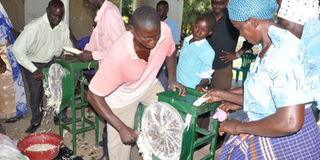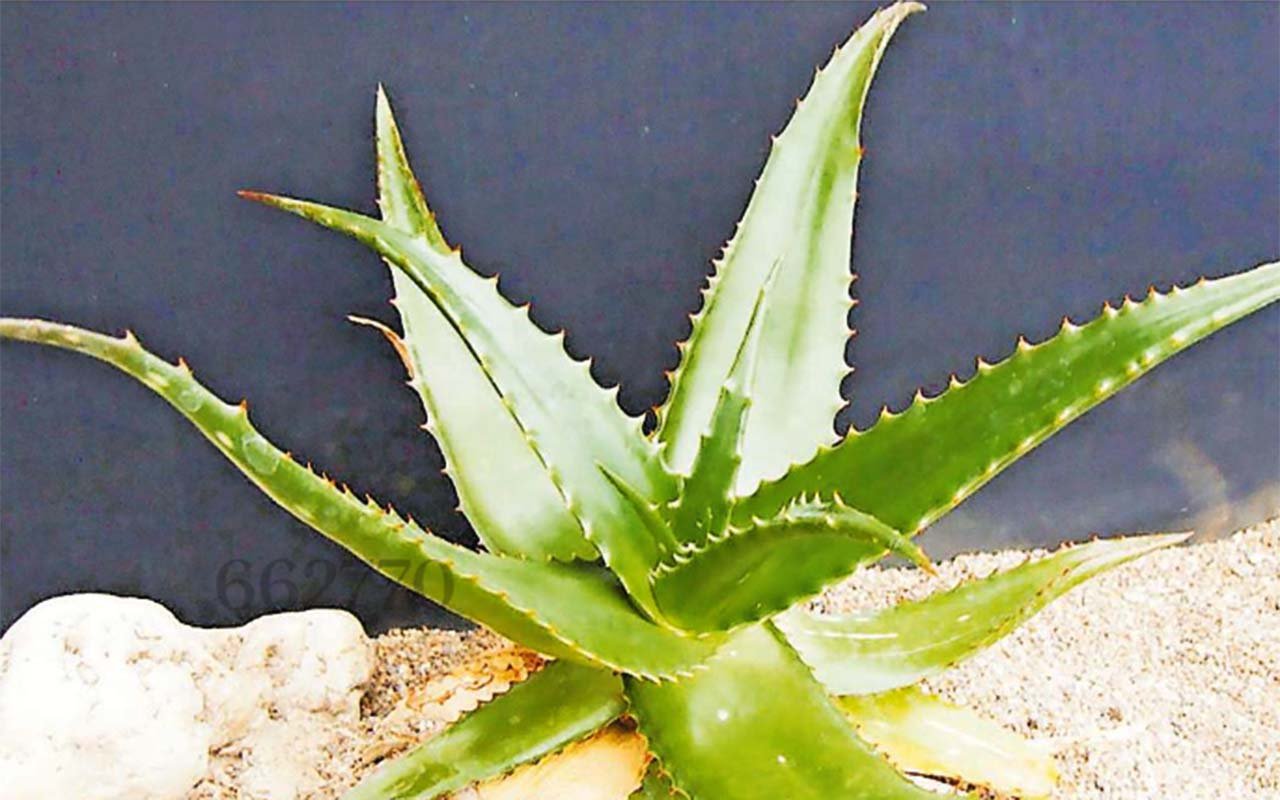Prime
Cassava for beer: An opportunity for farmers

Members of Agaaliawamu Cassava Processing and Marketing Cooperative in Nakasongola learn how to slice cassava into chips, which is then dried and processed into cassava flour, which is used in brewing beer. FILE PHOTO
Godfrey Ssekaboga, a farmer in Nakasongola District, has been growing cassava since 1998. In 2002, he started growing the Nase variety, an improved cassava developed at National Crop Resources Research Institute, Namulonge.
For him, cassava is both a food and cash crop. He earns up to Shs10m a year from his 13 acres of cassava.
But Ssekaboga was one of those affected when the Cassava Mosaic and Brown Streak Diseases were prevalent in Nakasongola from 2010 – 2013.
Cassava Mosaic affects mainly the leaves, which turn yellow consequently affecting photosynthesis of the plant, while Cassava Brown Streak Disease affects the roots turning them brown. This leads to poor yields.
He is still trying to recover from the losses suffered. But through being a member of Agaaliwamu Cassava Processing and Marketing Cooperative (Acaproma), he got Nase 14 variety, which is disease-resistant and high yielding.
Henry Muwanguzi, the cooperative’s chairman, says they have improved their yields with support from Cassava Adding Value for Africa (C:AVA).
The Bill and Melinda Gates Foundation-supported project is developing value chains for High Quality Cassava Flour in five countries—Ghana, Tanzania, Nigeria, Malawi and Uganda—to improve livelihoods and incomes of smallholder households.
In Uganda, the project is implemented by Africa Innovations Institute, and was first piloted in the eastern region in 2001. It has now been rolled out to central region.
Fracis Alecho, the country manager, C:AVA, says they have built the capacity of cassava processors in Nakasongola. “We help them to link them to aggregators and breweries who buy from them.”
The demand in the brewing industry has opened opportunities for the farmers who sell in bulk to aggregators who buy inputs on behalf of the breweries.
Uganda Breweries (UBL) currently requires 700 metric tonnes of high quality cassava flour per month.
However, Joseph Kawuki Kigundu, the agriculture manager UBL, says with the increase in market for their products—Ngule and Senator—the demand for high quality cassava flour is projected to rise to 1,500 metric tonnes in the next six months.
As such the local farmers through the guidance of C:AVA will be able to boost their sales by supplying to the brewery.
UBL mainly use the bulking agent model where companies or farmer groups, cooperatives and individuals who bulk material meeting their specifications.
“This material is got from various farms, farmers, households and is processed into the high quality cassava flour which is delivered to us,” Kawuki says.
The brewery team is supported by C:AVA (and sometimes bulking agents). Capacity building is facilitated through trainings and provision of agronomic support on the growing of the cassava that is bulked.
However, in order for the farmers to realise the market for their cassava, the breweries has set minimum standards for the farmers have to comply with in order to get a product that meets the agreed standards. Harvesting should be done at the right time. “We recommend that farmers harvest the cassava nine months after planting. It is not recommended to harvest after the roots have been in the ground for too long because it causes high fibre content,” Kawuki explains.
After harvesting, fresh tubers should be received and stored in an open area preferably on tarpaulins and plastic sheets.
making high quality cassava flour
The cassava should be peeled within 24 hours after harvest.This is done to avoid breakdown of starch.
The peeled tubers should be soaked in fresh water for at least 12 hours to allow breakdown of cyanide.
CAVA has also organised the farmers in to groups and built a cassava processing mill at every village.
The processing plant has small scale grating machines, which are used to chip the cassava tubers.
Chipping helps to reduce the drying period. Grated tubers of approximately 2mm in thickness can dry in less than four hours saving both cost and time.
After which, the chips are laid on tables or tarpaulins to dry. It is not recommended to dry on bare ground because it compromises the quality of the product.
After drying, chips are milled and packed in plastic bags with liners if delivery is to be done within four weeks.
Small-scale milling can be done by small multi-commodity hammer mills. Each commodity requires its own sieve.
The resulting High Quality Cassava Flour is bagged in 50kg labelled bags and sold directly or indirectly to the breweries (sometimes bulkers are in between).




